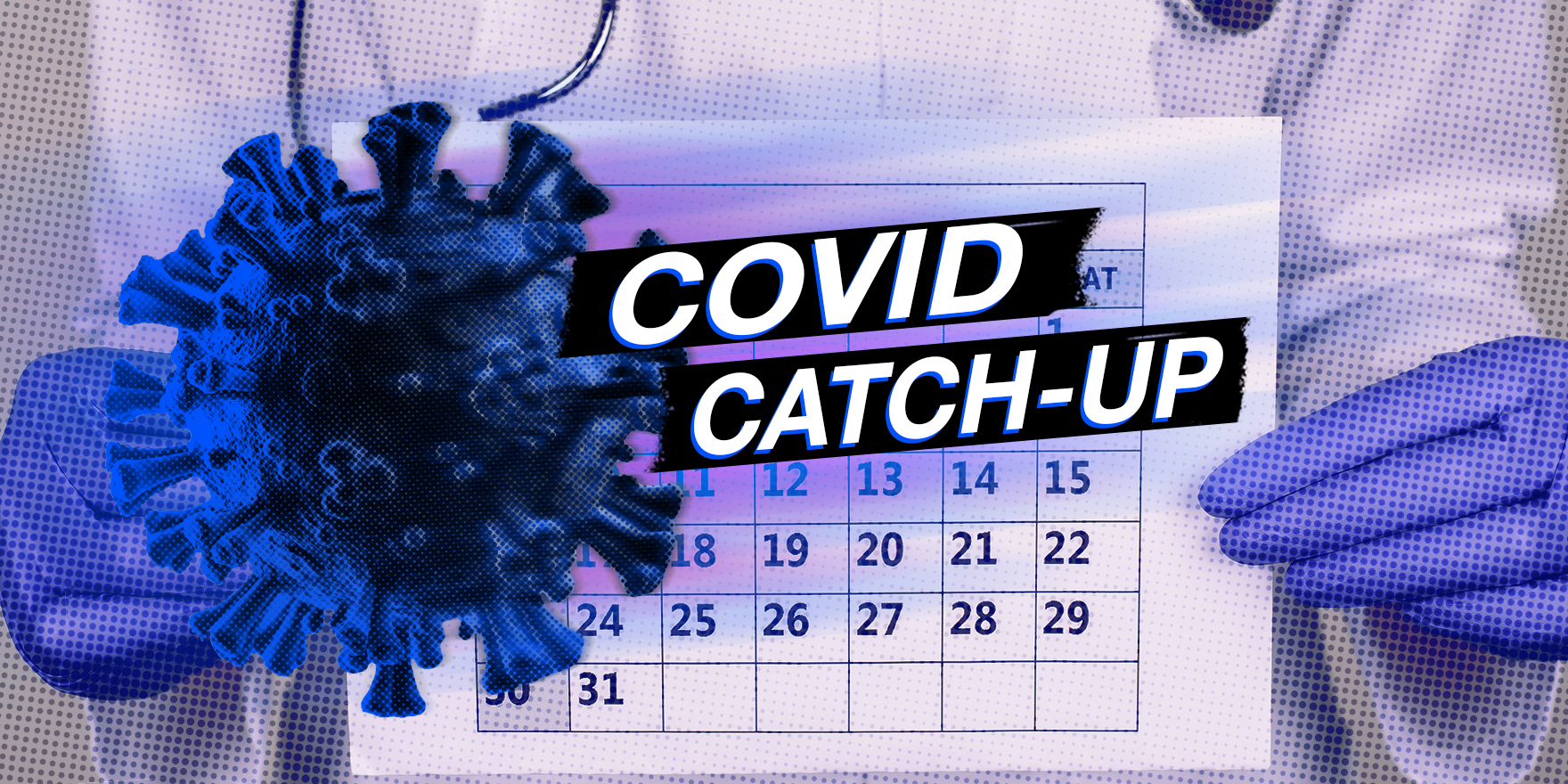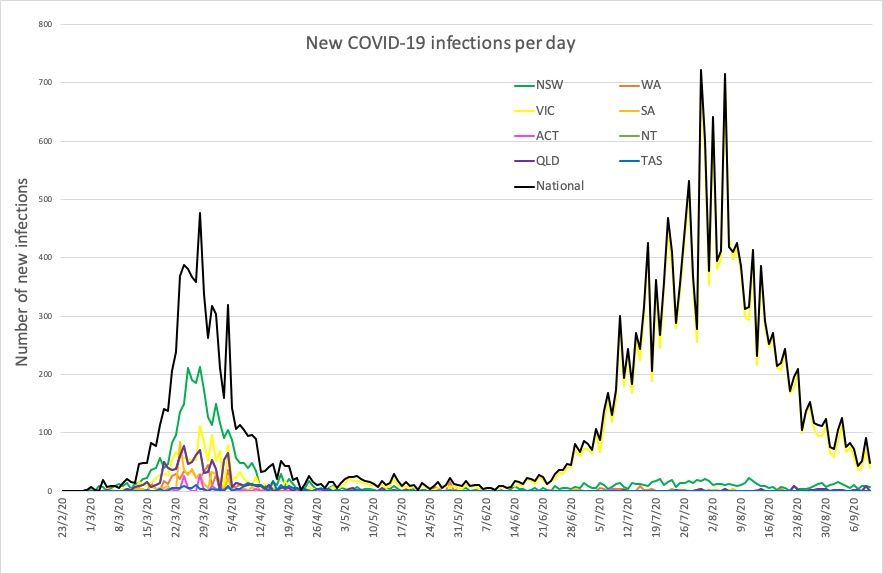And a risk stratification score can help predict mortality in patients hospitalised with COVID-19.
Welcome to The Medical Republic‘s COVID Catch-Up.
It’s the day’s COVID-19 news in one convenient post. Email bianca@biancanogrady.com with any tips, comments or feedback.
11 September
- Trauma admissions to Westmead Hospital dropped by a third during pandemic peak.
- Risk stratification score can help predict mortality in patients hospitalised with COVID-19.
- The latest confirmed COVID-19 infection numbers from around Australia.
- Trauma admissions to Sydney’s Westmead Hospital dropped by as much as a third during the peak of the COVID-19 pandemic in March and April this year, compared to the same period in the previous four years.
Writing in the ANZ Journal of Surgery, researchers reported a 23%-34% decline in the monthly average trauma admissions during that period, although only the decrease in minor trauma admissions was statistically significant.
The study found a 40%-51% decrease in the average number of road traffic collisions, a 13%-29% decrease in the average number of falls, but no major difference in the number of admissions for self-harm, assaults or domestic violence.
The authors wrote that they had predicted there would be an increase in admissions for domestic violence, given forecasts by other organisations of a 20% global increase in gender-based violence during lockdown.
“However, this is not an accurate reflection of the true incidence of domestic violence in the community, as there are many unable to seek health care in these circumstances,” they wrote. “Additionally, data was only captured on the number of patients requiring hospitalisation and did not include those who are discharged from the Emergency Department.” - A risk-stratification score based on factors including age, sex, comorbidities, peripheral oxygen saturation and C-reactive protein levels can help predict mortality risk in – and guide management of – patients admitted to hospital with COVID-19.
A paper published in the BMJ reported the outcomes of a prospective observational cohort study, which used data from 35,463 adult patients admitted to hospital with COVID-19 in the UK to develop a set of potential predictor variables for mortality.
The median age of the cohort was 73 years, and overall mortality rate was just over 32%. Of 41 potential variables, the research team identified eight that were the strongest predictors of mortality risk: age, sex, number of comorbidities, respiratory rate, peripheral oxygen saturation, Glasgow coma scale, urea level, and C reactive protein. After selecting cut-off scores for these, they developed the 4C Mortality Score and tested it in a validation cohort of 22,361 patients.
The predicted mortality in this cohort exactly matched the observed mortality – around 30%. When stratified into four levels of risk, the mortality rate for low, intermediate, high and very high risk were 1.2%, 9.9%. 31.4% and 61.5%. The score correctly classified individuals as low-risk more than 99% of the time, and correctly ruled people out of being low risk more than 98% of the time.
“Model performance compared well against other generated models, with minimal loss in discrimination despite its pragmatic nature,” the authors wrote. - Here are today’s confirmed COVID-19 infection numbers from around Australia to 9pm Thursday:
National – 26,513, with 788 deaths
ACT – 113 (0)
NSW – 4142 (7)
NT – 33(0)
QLD – 1143 (0)
SA – 465 (0)
TAS – 230 (0)
VIC – 19,728 (51)
WA – 659 (1)



